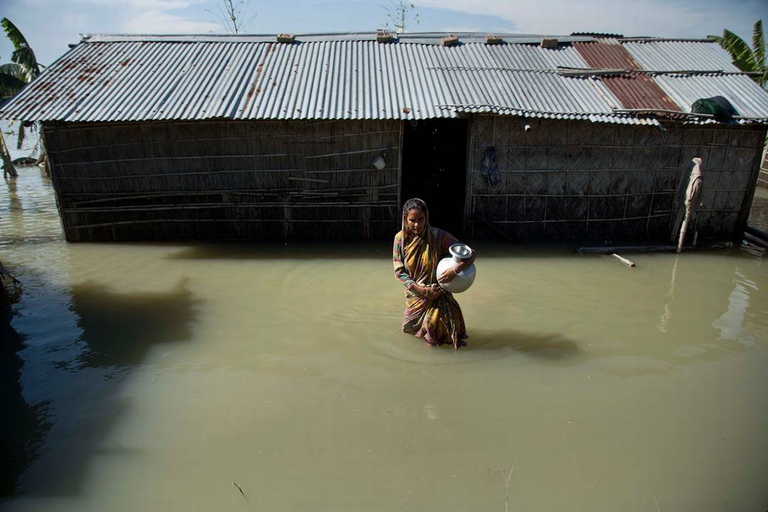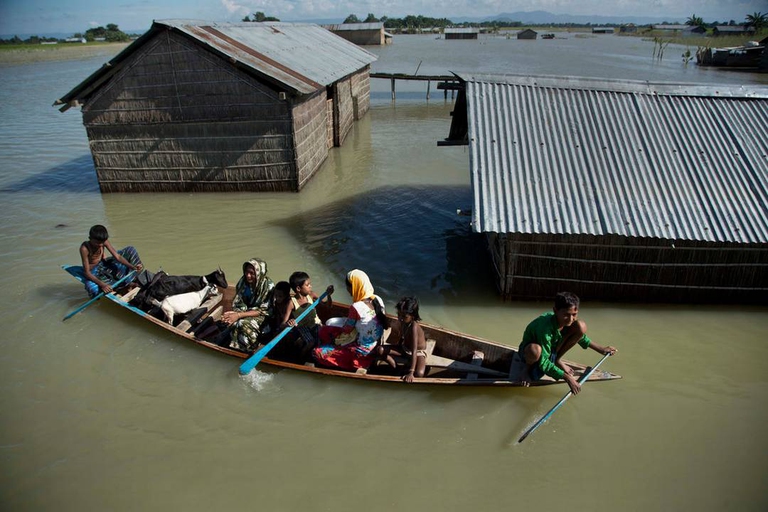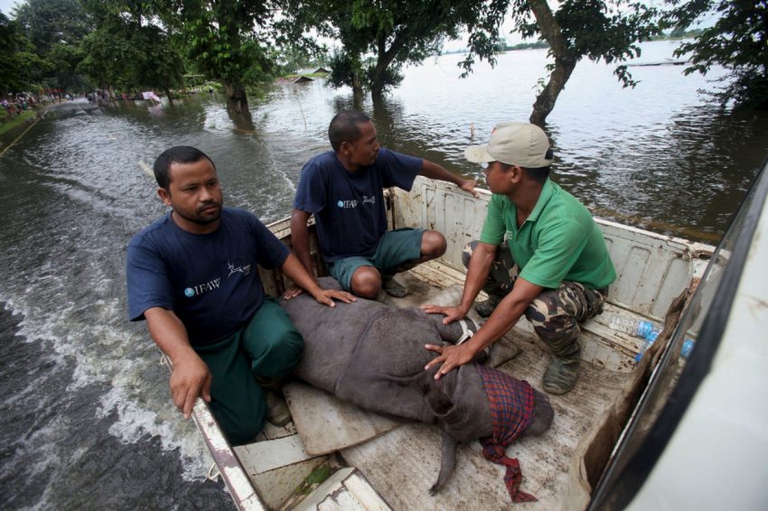
As per tradition after 12 years India held Mahakumbh, the world’s largest spiritual congregation that has been attracting pilgrims from across the globe.
Il monsone annuale è stato particolarmente violento e ha devastato il centro-nord del Paese, colpendo soprattutto gli stati più poveri.
At least 150 people have died and millions have been displaced. Villages have been completely destroyed and more than 20 rare one-horned rhinoceroses (Rhinoceros unicornis) have drowned. These are the appalling figures of the monsoon that hit India with unprecedented strength, submerging the country, literally.
Over the past three weeks, the monsoon has hit the states of Himachal Pradesh, Assam, Bihar, Western Bengal and Maharashtra, some of India’s poorest. The inhabitants, which live in rudimental and vulnerable houses, couldn’t do anything to address the overflowing of streams and floods.
Water has submerged entire villages and forced a huge number of people to flee what was left of their houses. India’s civil protection is relentlessly working to rescue citizens and help them reach the shelters provided by the government. According to officials, 1.1 million people have been displaced in the state of Assam alone.
Besides causing the death of at least 150 people and displacing millions of people, heavy rains have also dramatically affected wildlife. The Kaziranga National Park, in the state of Assam, has been heavily hit and 80 per cent of its area is now under water. The park is a World Heritage Site, is home to the highest number of Bengal tigers (Panthera tigris tigris), and is home to 60 per cent of the world’s one-horned rhinos. Globally, there are only 2,544 rhinos left and, according to PTI News, 21 individuals have drowned in India along with hundreds of other animals.
Siamo anche su WhatsApp. Segui il canale ufficiale LifeGate per restare aggiornata, aggiornato sulle ultime notizie e sulle nostre attività.
![]()
Quest'opera è distribuita con Licenza Creative Commons Attribuzione - Non commerciale - Non opere derivate 4.0 Internazionale.
As per tradition after 12 years India held Mahakumbh, the world’s largest spiritual congregation that has been attracting pilgrims from across the globe.
From Muhammad Yunus’ Grameen Bank in Bangladesh to Europe, microfinance is already a reality that supports entrepreneurs and social inclusion.
Energy in India: an overview India is a country of over 1 billion people, around 18% of the world population. 60% of Indians live in rural areas and at least 240 million have no access to electricity. It is one of the fastest growing economies in the world, estimated to grow 8% in the next
Workers in tea gardens of West Bengal, India, that produces Ctc tea for domestic consumption complain that they have been devoid of basic facilities while political parties make hollow promises during every elections which are never fulfilled.
India is in the middle of the elections, but sadly none of the politicians have uttered a word on man-animal conflict that has been devouring several lives every year.
Manipur, a state in north-east India, is still reeling under the tremors of violence that broke out last year devouring lives and paralyzing the economy.
The government of Tanzania is currently planning to evict more than 80.000 indigenous Maasai people from their ancenstral land
A new UNU-INWEH report on the global bottled water industry reveals the massive scale of this market and the lack of strict quality controls.
Isatou Ceesay founded a social enterprise that is helping to fight plastic pollution and empowering women and young people to gain economic independence.










